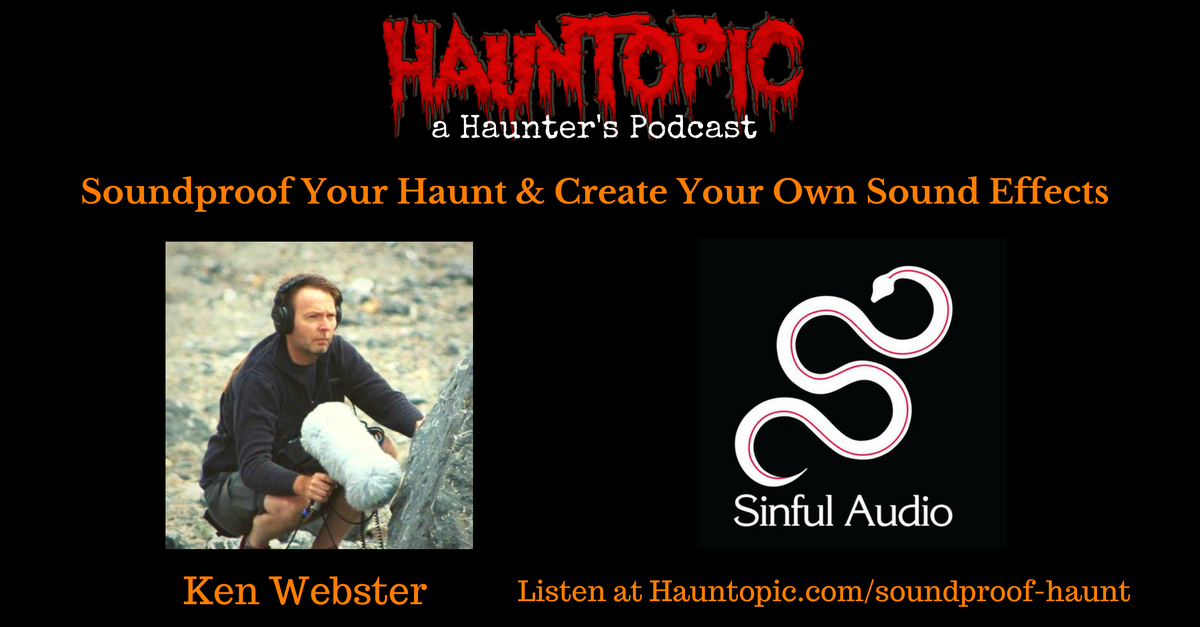Podcast: Play in new window | Download (Duration: 52:25 — 48.0MB)
Subscribe: Apple
Keeping the sound contained in the rooms of your Haunt is a challenge. But with one simple material and a few tweaks to your layout, you can almost soundproof your haunt by absorbing lots of the noise. We say ‘almost’ because it’s impossible to seal in all the sound but you can reduce noise overflow between areas. Listen to this podcast episode to learn more.
We all want our customers and attendees to experience an immersive environment when they walk through the mazes and rooms in our attractions and haunted houses but getting the atmospheres from blending together is a skill. We either use one soundtrack through the entire haunt and use smaller noises within each room or we try to create unique sounds for each area without blending the noises.
Ken Webster, from Sinful Audio (a sound design studio for haunts), explains that with a few simple design principles you can improve the sound experience in each of your rooms. And not spend much money doing it.
Here are 5 things you can try to help soundproof your Haunt:
- Position your speakers up high and pointed down toward the center of your area. This helps shoot the noise to the center away from your exits.
- Design your haunted attraction with angled walls. 90 degree angle walls are the worst for sound bouncing off of them. If possible, design walls or just one wall at an angle to deflect sound.
- Hang pictures and add furniture. The more soft objects to absorb the sound the better.
- Create sound absorbing panels with a fireproof insulation like Roxul or other sound deadening materials.
- Add solid ceilings where possible. Without blocking sprinkler systems and still staying code compliant.
Listen to this episode where Ken explains ways to help soundproof your haunt.
 Roxul Panels built by Ken to help soundproof any room.
Roxul Panels built by Ken to help soundproof any room.
Creating Low Frequencies that you can feel.
You can also use audio in your attraction that is such a low frequency that it can be felt and give your customers an eerie experience that they won’t forget. This is called “Infrasound”: which is sometimes categorized as low-frequency sound or signals that are lower than 20Hz in frequency. This also means that it is below the standard threshold of human hearing which is 20Hz – 20kHz. Read Ken’s article on Infrasound here.
Final Thoughts:
Experiment with different layouts with your rooms and areas. Set up your speakers, add furniture and sound panels, and test. Reposition walls if you need to. Set up your speakers a different way. Add more soundproofing panels. Maybe just turn down the volume while leaving the sound still effective.
We’re pretty sure your attendees will still have a great show.



